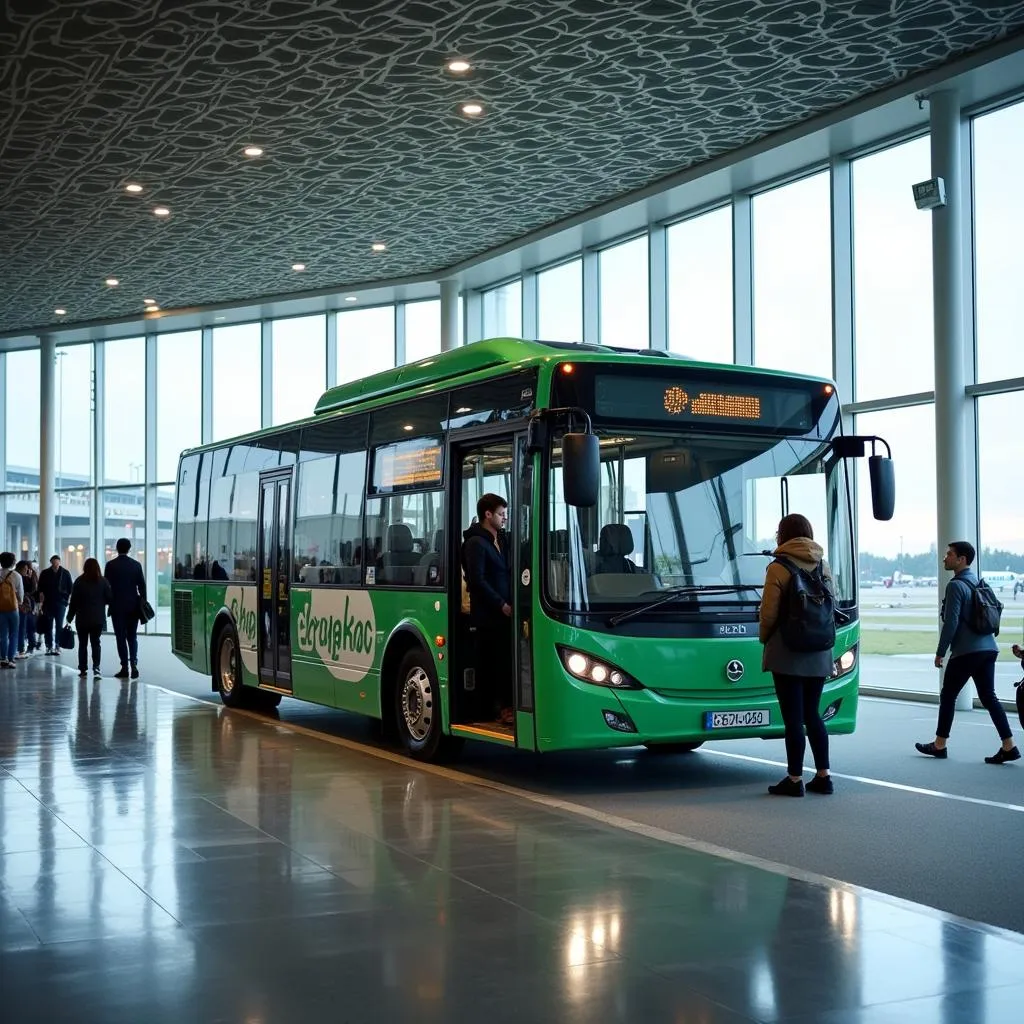The term “Zero Airport” is increasingly gaining traction in discussions about sustainable travel and the future of aviation. But what exactly does it mean? Essentially, a zero airport is an airport that aims to minimize or completely eliminate its environmental impact, particularly its carbon footprint. This concept aligns with the global push towards sustainability and reducing greenhouse gas emissions.
The Drive Towards Zero Airports: Why Now?
The aviation industry, while crucial for global connectivity, is a significant contributor to carbon emissions. As awareness about climate change grows, the need for eco-friendly travel solutions, including sustainable airports, becomes paramount. This urgency has led to the exploration of various strategies and technologies to create airports that are not only efficient but also environmentally responsible.
Key Features of a Zero Airport
Several key aspects contribute to the creation of a zero airport. These features encompass both infrastructural changes and operational adjustments to minimize environmental impact:
- Renewable Energy Sources: Transitioning from fossil fuels to renewable energy sources like solar and wind power for airport operations is crucial. This shift significantly reduces carbon emissions and promotes clean energy use.
- Energy Efficiency: Implementing energy-efficient technologies throughout the airport, including LED lighting, smart building management systems, and optimized air conditioning, reduces overall energy consumption.
- Sustainable Transportation: Encouraging the use of public transport, electric vehicles, and cycling to and from the airport through incentives, dedicated lanes, and charging stations, minimizes the carbon footprint associated with passenger travel.
- Waste Management: Implementing robust waste management systems that prioritize recycling, composting, and responsible disposal reduces the airport’s environmental footprint.
- Water Conservation: Employing water-saving fixtures, rainwater harvesting systems, and greywater recycling systems minimizes water usage and promotes sustainability.
- Sustainable Materials: Using sustainable and locally sourced materials in airport construction and renovation projects minimizes the environmental impact of these activities.
 Solar Panels on Airport Roof
Solar Panels on Airport Roof
Challenges and Opportunities in Achieving Zero Airport Status
While the concept of a zero airport is gaining momentum, several challenges need to be addressed:
- High Initial Investment: Transitioning to renewable energy and implementing sustainable technologies often require significant upfront investments.
- Technological Advancements: Continuous research and development of new technologies are essential to further reduce the environmental impact of aviation.
- Industry Collaboration: Achieving zero airport status necessitates collaboration between airports, airlines, governments, and technology providers.
Despite these challenges, the pursuit of zero airports presents significant opportunities:
- Reduced Operational Costs: While the initial investment might be high, using renewable energy and improving energy efficiency can lead to long-term cost savings on energy bills.
- Enhanced Brand Image: Airports that prioritize sustainability enhance their brand image and appeal to environmentally conscious travelers.
- Job Creation: The development and implementation of green technologies create new job opportunities in the aviation and renewable energy sectors.
 Electric Vehicle Charging Station at Airport
Electric Vehicle Charging Station at Airport
The Future of Aviation: A Network of Zero Airports
The concept of a zero airport is not just an ambitious goal but a necessary step towards a more sustainable future for aviation. As technology advances and collaboration within the industry strengthens, we can expect to see more airports striving for and achieving zero-emission status. This transition will not only benefit the environment but also create a more efficient, cost-effective, and passenger-friendly aviation industry.
Do you have questions about airport codes or other airport-related information? You might find the answers you need on our website. Check out our resources on LAS Americas airport code or learn more about the SDQ airport code. For international travel, you might find our information on the Las Americas International Airport code helpful.
FAQs about Zero Airports
1. What is the primary goal of a zero airport?
The primary goal is to minimize or eliminate the airport’s environmental impact, particularly its carbon footprint, and contribute to a more sustainable aviation industry.
2. How realistic is the concept of a zero airport?
While challenging, it is becoming increasingly realistic with advancements in renewable energy technologies, sustainable building materials, and industry-wide commitment to sustainability.
3. Are there any airports that have achieved zero-emission status?
While some airports have made significant strides, achieving absolute zero emissions is a work in progress. However, many airports are actively implementing strategies to significantly reduce their environmental impact.
4. How can I contribute to the zero airport initiative as a traveler?
You can contribute by choosing sustainable transportation options to and from the airport, supporting airlines with eco-friendly practices, and minimizing waste during your travels.
 Passengers Boarding Electric Bus at Airport
Passengers Boarding Electric Bus at Airport
Need further assistance or have more questions? Our dedicated customer support team is available 24/7 to assist you. Reach us at +13089626264, email us at [email protected], or visit our office at 404 Bothwell St, Oxford, NE 68967, USA.


